#water treatment
Explore tagged Tumblr posts
Text
I live in the US and in a city where they treat with chlorine. They absolutely refuse to treat with fluoride though but so much chlorine that it literally makes the water unsafe for me to drink! I have a lot of digestive issues and the amount of chlorine that’s in the water literally kills my stomach. Also doesn’t help that the pipes in my apartment are bad and I’m pretty sure have some sulfur or something similar cause sometimes when I’m showering I have the lovely smell of chlorine and sulfur mixing together. It’s great gotta love this awful little town <3 what’s worse is that the other towns surrounding this one literally put fluoride and take out the chlorine when treating their water. I can’t wait to move so my hair can heal and I don’t have to only use a britta filter to drink water.
Also most people that I know in my city treat their water with a filter at home or buy water from the store so they can have better water
"they're insects that only live in clean water!"
riko I have questions about your definition of "clean"
2K notes
·
View notes
Text
SoftPro IronMaster 1.5 Cubic Foot Water Filter: The Ultimate Solution for Iron-Rich Well Water
If you're a well owner grappling with high iron levels in your water, the SoftPro IronMaster 1.5 Cubic Foot Water Filter stands out as a premier solution. This system is meticulously designed to tackle iron, manganese, and sulfur contaminants, ensuring your household enjoys clean, safe, and odor-free water.

Unmatched Filtration Capabilities
The SoftPro IronMaster employs advanced Air Injection Oxidation (AIO) technology combined with Katalox Light® media, enabling it to remove:
Iron: Effectively eliminates up to 30 parts per million (ppm), addressing even the most severe iron concentrations.
Manganese: Removes up to 7 ppm, preventing unsightly black stains and potential health risks.
Hydrogen Sulfide (Sulfur): Eliminates up to 5 ppm, eradicating the notorious "rotten egg" odor often associated with well water.
This robust filtration ensures that your water is not only aesthetically pleasing but also safe for consumption and daily use.
Key Features and Benefits
Chemical-Free Operation: The system's reliance on AIO technology means there's no need for additional chemicals, making it an eco-friendly choice for households.
Enhanced Water Quality: Beyond iron removal, the SoftPro IronMaster improves overall water clarity and taste, elevating your daily water experience.
Durable and Low Maintenance: Constructed with high-quality materials, this filter boasts a long lifespan and requires minimal upkeep, offering peace of mind to homeowners.
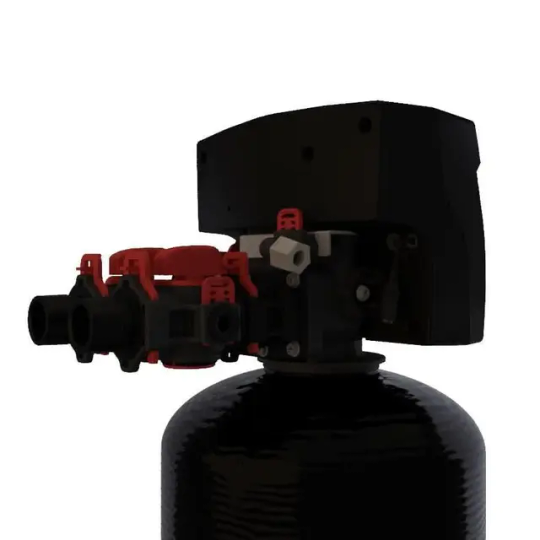
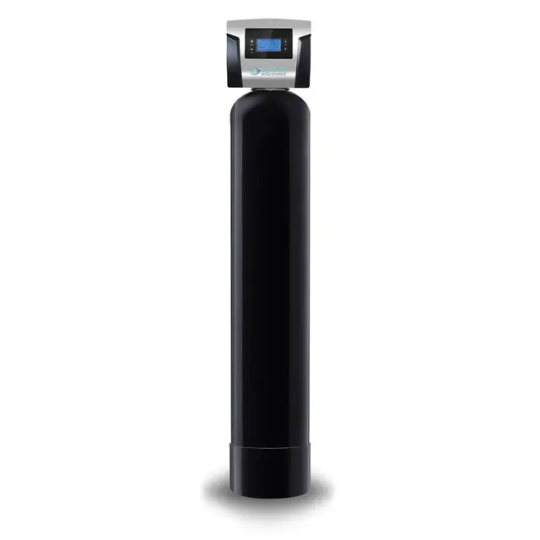
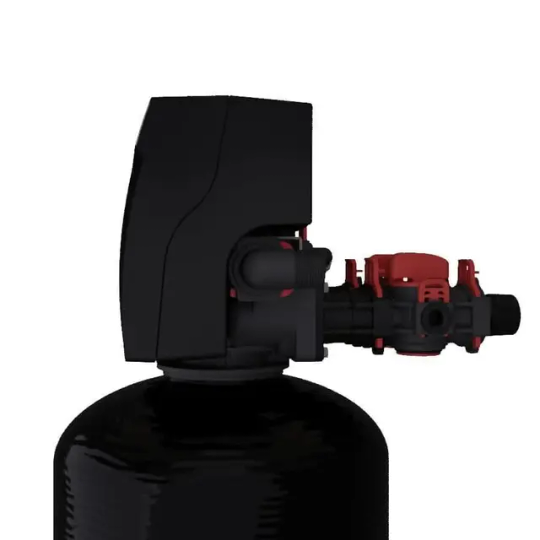
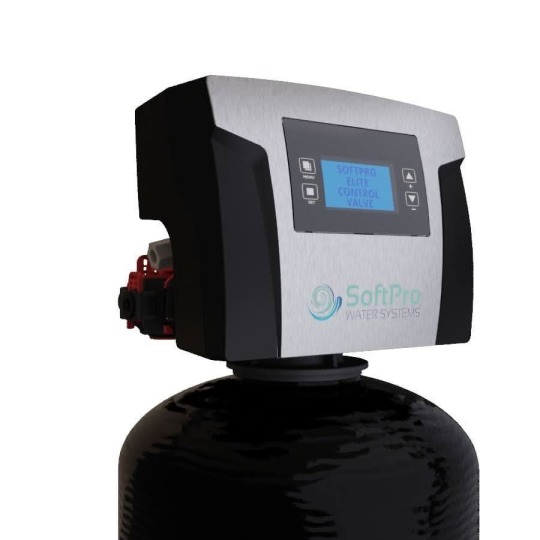
User-Friendly Installation and Operation
Designed with the user in mind, the SoftPro IronMaster ensures a hassle-free experience:
Straightforward Installation: Whether you're a DIY enthusiast or prefer professional assistance, the installation process is simplified for your convenience.
Automated Functionality: The system features a programmable control valve with an intuitive LCD screen, allowing for easy monitoring and adjustments.
Vacation Mode: A unique feature that pauses regeneration cycles during extended periods of non-use, conserving resources and extending the system's efficiency.
Customer Testimonials
Users have consistently praised the SoftPro IronMaster for its performance and reliability:
"So far the IronMaster has worked very well. Our water quality is much better than it was before with our old filter system. Even the periodic iron flushes have become a thing of the past."
Such feedback underscores the system's effectiveness in transforming water quality and enhancing user satisfaction.
Conclusion
The SoftPro IronMaster 1.5 Cubic Foot Water Filter emerges as a top-tier solution for homeowners contending with iron-laden well water. Its advanced filtration capabilities, combined with user-centric features and positive customer reviews, make it a worthy investment for ensuring pristine water quality in your home.
For a comprehensive review and deeper insights into the SoftPro IronMaster, consider watching the following video:
youtube
#Iron Master Water Filter#SoftPro AIO#Iron Water Filter#ASSEMBLED IN USA#iron removal#Water Treatment#Youtube
345 notes
·
View notes
Text
From Phoebe Weston at the Guardian comes the story of the Herculean effort to clean up Switzerland’s waterways, an effort that has transformed the unique European country into one that enjoys the cleanest urban swimming spots on the continent.
In the 1960s, water quality in the form of sewage treatment investment received the smallest share of attention, and rivers and lakes like the famous one at Geneva were covered in algal mats, off-colored foam, and dead fish.
A typhoid outbreak at Zermatt in 1963 led to several deaths, and hundreds fell ill. It was found that raw sewage was the cause of the epidemic, and an outcry from the public led to massive investments in sewage treatment and pollution control.
That was then. Now, as Weston’s photography testifies, the “Blue Gold” of Switzerland’s waterways are the envy of their neighbors, and people of all ages and at all hours flood the beaches to enjoy a swim, even in the nippy early spring.
“Very high water quality is important to the population,” says Michael Mattle, head of wastewater technology at the engineering company Holinger. “We take a lot of care not to pollute water on its way through Switzerland.”
According to one source, in 1965, only 14% of the population of Switzerland was connected to a wastewater treatment plant. Today it’s 98%, and the government spends €191 on water purification per citizen, compared to just €98 in the UK, for example.
Since 2016, the Swiss federal government has also been working on a massive pollution control effort for drugs and medications flushed down the toilet when they’re excreted by the body. They include, as Weston details, antidepressants, anti-inflammatories, diabetes medication, and even antibiotics.
Wastewater treatment plants basically work like a human stomach, utilizing bacteria to digest and remove organic matter from water. Alternatively, the treatment for these pollutant drugs requires flushing the water through activated charcoal which can remove 80% of the total pollutant load. What’s left are the famous PFAS compounds referred to as “forever chemicals” by the media.
That 20%, operators at the wastewater plants say, should be the focus of regulatory legislation, not treatment infrastructure.
Weston also reports that the EU, and Switzerland’s near neighbors, are visiting to learn about and hopefully replicate the country’s success, with the EU considering new legislation that would require any sewage treatment plants that serve areas of more than 10,000 people to treat for the pollutant pharmaceuticals mentioned above.
#switzerland#water treatment#waste water treatment#water quality#clean water#pfas#science#europe#water pollution#pollution solutions
63 notes
·
View notes
Text
I'm going on a tour of a water treatment plant today. Yay, paid field trip!
#off topic#water treatment#field trip#work stuff#at work#touring the facility#and picking up slack? lol#mar 22 2024
31 notes
·
View notes
Text
From beach blight to bio-brilliance: Mexican researchers transform sargassum seaweed into sustainable paper, filters, and water treatment systems, saving the Caribbean's biodiversity.
30 notes
·
View notes
Text
The interior anaerobic zone then becomes a site where heterotrophic bacteria can carry on their denitrifying activity (Fig. 16.6).

"Environmental Chemistry: A Global Perspective", 4e - Gary W. VanLoon & Stephen J. Duffy
#book quote#environmental chemistry#nonfiction#textbook#anaerobic#heterotroph#bacteria#denitrification#water treatment#ammonia#nitrite#nitrate#aerobic
2 notes
·
View notes
Text
DRINKABLE WATER IS A PRECIOUS RESOURCE
youtube
According to (UNICEF) estimated that 2 billion people around the world don't have access to drinkable water. But how drinkable is hard to find when earth is 71% of earth is water.
#water scarcity#clean water#water crisis#water pollution#water conservation#global water issues#water purification#water quality#drinking water#water resources#water sustainability#water management#water shortage#water access#environmental issues#water treatment#water security#public health#drinkable water#Youtube
2 notes
·
View notes
Link
51 notes
·
View notes
Text
Norovirus on the PCT . . . How an outbreak spreads along the trail
September 24
By Pien Huang for NPR
I was just corresponding with another PCT-hiking friend about the few times we have felt unsafe on the trail. All of our examples related, not to bears or rattlesnakes or even lightning (I might have included lightning had I thought about it more), to human encounters. A lost soul or two on the trail, hunters combining alcohol and firearms, a camping area near a road. Now here is another thing to worry about . . . norovirus. It is a good reminder not to abandon hygiene in the wilderness. RH

EIS officer Arran Hamlet walks into the Government Meadows site to conduct environmental sampling for norovirus.
Last September, Kevin Quinn was trekking through a remote, mountainous region in central Washington state, when he started feeling sick. "At first, I thought it was just a stomachache," he says, "But when we got to the campsite I started throwing up, and it started coming out the other end as well."
Quinn was on the trail with his daughter, who had left her job so they could hike together. After months of hiking, he found himself wiped out at a campsite in the middle of nowhere.
"I had heard about the norovirus for years, but it was always in the context of 'Oh, there's a cruise ship in the Caribbean,'" he says, "You don't think about this being an issue when you're out on the Pacific Crest Trail."
Norovirus is a highly contagious virus that can cause serious gastrointestinal distress for several days. It's often associated with enclosed, crowded settings like cruise ships, health care facilities and childcare centers.
But it also crops up in the wilderness – like in an outbreak among hikers like Quinn last year which was documented in a recent investigation by the Centers for Disease Control and Prevention.
Call in the disease detectives
After a stream of sick Pacific Crest Trail hikers came through the Washington Alpine Club Lodge near Snoqualmie Pass last summer, a volunteer named Robert Henry closed the dorm-style lodge and emailed health authorities.
"My concern at the time was to make sure that the hikers on the trail didn't get any worse, and to make sure that the volunteers at the Washington Alpine Club didn't contract whatever it was they were bringing in," Henry ways. He also worked to warn other hikers about the threat.

EIS officer Dr. Arran Hamlet observes a water source being tested for environmental contamination of fecal waste and norovirus.
Hamlet focused on a 70-mile stretch of trail south of the Lodge, where ill hikers were coming from. One common rest stop, he learned, was a remote log cabin in the meadows, with a pit latrine and a stream that's used for drinking water.
Hamlet and his team hiked out to the cabin and tested water from the stream. They also swabbed the toilets, the door handles, the tabletops, the poker chips – anything people were touching. While the water samples came back clean, "every single [surface] swab tested positive for fecal contamination," he says.
"This doesn't mean that we can see human feces on things," he adds, "but at some point in time, there was transmission of human fecal contamination onto every surface in the cabin we swabbed, and also everywhere in the latrine."
The results of the investigation were published this month in the CDC's Morbidity and Mortality Weekly Report. Investigators concluded that there was an outbreak of norovirus on the trail last summer that was spreading between hikers and that "exposure to contaminated surfaces within the cabin and ... latrines likely amplified transmission."
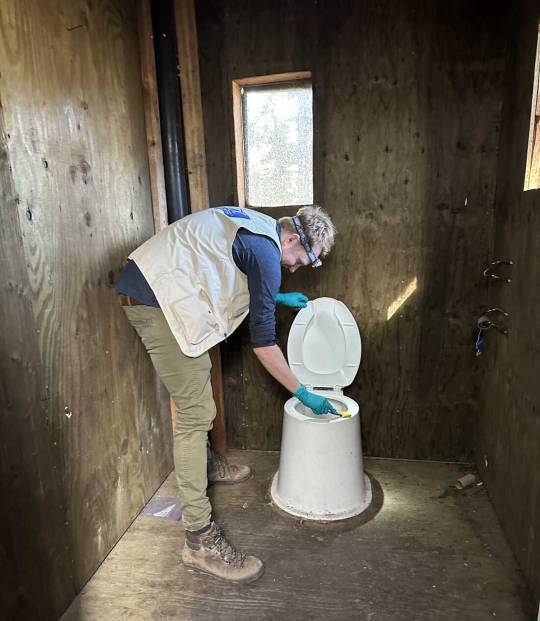
EIS officer Dr. Arran Hamlet swabs a backcountry pit latrine for norovirus sampling during an investigation for an outbreak of gastrointestinal illness among Pacific Crest Trail Hikers in 2022.
Shanna Miko, a nurse epidemiologist at CDC, was part of the field team on the Pacific Crest Trail study — and it wasn't her first norovirus-in-the-woods investigation. Last year, she traced an outbreak at the Grand Canyon, among people who were backcountry hiking and whitewater rafting.
"These are very well-planned trips. For many people, they're once-in-a-lifetime," she says. Travelers often read books and blogs in preparation, and get advice from others who have done the trip before them, accumulating trail wisdom – "places where people frequently stop, or places that have shelters where people frequently sleep over," good places to get water, or use the bathroom, she says.
These hubs, which seem so remote, see thousands of people – in varying levels of wellness – pass through in a season. They may not leave visible traces but some may leave germs, like norovirus, that can live on environmental surfaces for a long time, Miko says. (According to the CDC, this hardy virus can stay alive on surfaces for "days or weeks.")
Hand sanitizer doesn't cut and other advice for staying well
With norovirus, hand sanitizer and common water filters don't work. The virus is small, and "extra sticky" on skin, Miko says. And it takes just a few dozen viral particles to make a person very ill.
Miko says there are ways that hikers can cut their risks.
Always wash your hands with soap and water after you have a bowel movement – and wash them again before you eat. "The soap is a great detergent to remove the virus from your hands," she says. While any soap and water will work, she recommends biodegradable soaps in protected national parks and backcountry woods to reduce the impact on the environment.
Make sure to drink and cook with good, clean water. Pay attention to where the water comes from, and treat it properly. "Boiling for at least three minutes is the best way to kill everything you would typically come across," Miko says. And note: Most water filters are good at removing bacteria and common parasites but they don't cut it when it comes to norovirus. You'll need to layer on either chemical treatment or UV light treatment to kill the virus. (Here's the CDC's breakdown of what works for which pathogens.)
If you do fall ill, shelter in place if you can. This is for your own safety, and for the sake of others, "so you aren't seeding norovirus particles along the trail and putting others at risk," Miko says. This is not the time to try to push ahead but to rest and hydrate. "If possible, try to keep your defecation far from the trail and bury it, and don't prepare food anywhere near where you're using the restroom or vomiting," she says.
The worst of the symptoms usually passes in two to three days, though "you can still spread norovirus after you feel better," Miko says. She recommends waiting at least two days after symptoms have resolved before continuing on.
Norovirus was the last straw

Kevin Quinn set out to hike the Pacific Crest Trail with his daughter, Katie, who had left her job so they could hike together. Norovirus derailed their plans.
He was thirsty, he was really tired – and while he filtered the water, he skipped the additional, chemical treatment. Soon, he knew he'd made a mistake. "I was completely debilitated. I didn't have the energy to set my tent up," he recalls, "All I was doing was, like, every 15 minutes, going off into the woods and either throwing up or having diarrhea."
After a night of being very ill, Quinn and his daughter made a long, slow trek out of the woods. "We never made the whole trail," he says, "We just decided to call it quits."
Earlier in the summer, he caught COVID, which derailed his trail plans for a month. Up ahead, there were wildfires and trail closures. For Quinn, getting norovirus was the last straw.
A year later, he still regrets that he didn't take the time to treat the water properly.
To other hikers – he says: heed the signs, wash your hands and make sure your water is clean. In his experience, it's not worth the risk.
And, we would add, that water treatment options like the Steripen (using UV technology), would seem to be more effective.
10 notes
·
View notes
Text
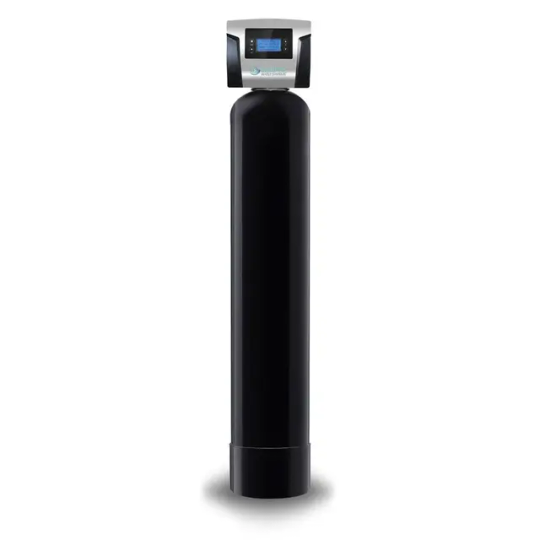
SoftPro AIO Iron Master Water Filter – Best Iron Filter for Well Water
If you are struggling with high iron levels in your well water, the SoftPro AIO Iron Master Water Filter is the ultimate solution. This best-selling iron filter efficiently removes iron, manganese, and sulfur, providing you with clean, odor-free, and safe water.
✅ ASSEMBLED IN THE USA – Built with high-quality materials for durability and performance. ✅ EASY INSTALLATION – Hassle-free setup with user-friendly instructions. ✅ FREE SHIPPING – Get it delivered to your doorstep at no extra cost!
Why Choose SoftPro AIO Iron Master Water Filter?
The SoftPro AIO Iron Master Water Filter is designed with advanced Air Injection Oxidation (AIO) technology, which naturally oxidizes and removes iron without using chemicals. This makes it one of the most efficient and cost-effective well water filtration systems available today.
Key Features of SoftPro AIO Iron Master Water Filter
✅ Air Injection Technology – Uses oxygen to oxidize and remove iron naturally. ✅ Removes Iron, Manganese & Sulfur – Prevents stains, black deposits, and foul odors. ✅ Chemical-Free Filtration – No harmful chemicals or additives required. ✅ High-Flow Rate – Ensures steady water pressure and efficient filtration. ✅ Low Maintenance & Long-Lasting – Designed for durability and minimal upkeep.
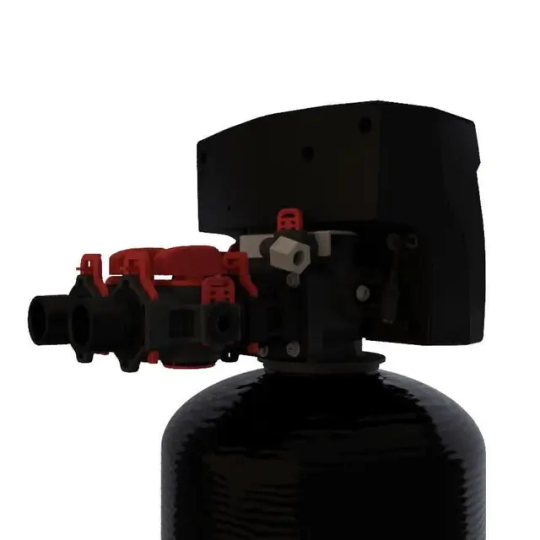
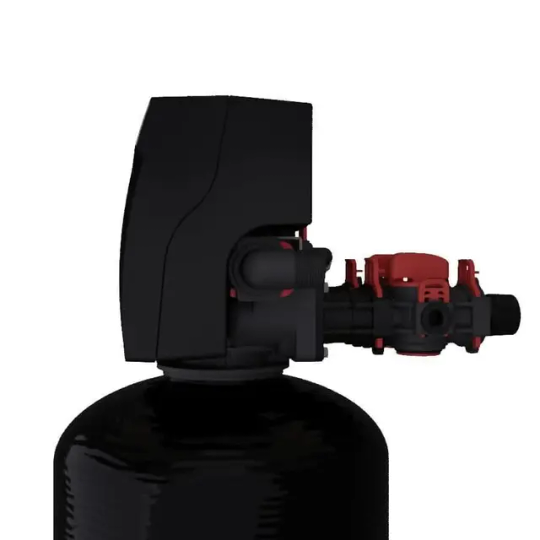


Benefits of Using SoftPro AIO Iron Master Water Filter
✔ Healthier Drinking Water – Eliminates contaminants for safe, clean water. ✔ Protects Plumbing & Appliances – Prevents iron stains, clogging, and corrosion. ✔ Better-Tasting Water – No more metallic taste or sulfur smell. ✔ Cost-Effective Solution – Reduces dependency on bottled water and expensive treatments.
Why is SoftPro AIO Iron Master the Best Iron Filter for Well Water?
Customers love the SoftPro AIO Iron Master Water Filter for its high efficiency, reliability, and easy maintenance. Unlike traditional iron filters, this system is eco-friendly, requires minimal upkeep, and delivers exceptional filtration performance.
Final Verdict
If you're looking for the best iron filter for well water, the SoftPro AIO Iron Master Water Filter is the top choice. Its powerful filtration, chemical-free operation, and long-lasting durability make it the best-selling solution for well water purification.
👉 Upgrade to the SoftPro AIO Iron Master Water Filter today and enjoy pure, iron-free water effortlessly!
👉 Check our official Website: SoftPro AIO Iron Master Water Filter
#Iron Master Water Filter#SoftPro AIO#Iron Water Filter#ASSEMBLED IN USA#iron removal#Water Treatment
322 notes
·
View notes
Text

#good news#this is so cool because this is a HUGE issue#algea blooms and dead zones…..but this and maybe other similar solutions#environmentalism#science#environment#nature#flowers#flora#floating farms#waste water treatment#water treatment#clean water#water pollution
70 notes
·
View notes
Text
Water Reuse Revolution: How India Tackles Liquid Waste Management Dive into India’s water reuse revolution! Discover how the nation is adapting to new liquid waste management regulations with innovative approaches to sustainability.
#water treatment#water treatment solutions#water plant treatment process#water treatment systems#zld
1 note
·
View note
Text





The joys of having a private water supply. The water went off just after everyone arrived for the barbecue so I missed the barbecue and worked on temporarily getting it back on again.
Continued the following day with bypassing the pumps with a spare, a more permanent temporary solution and then deconstructing the existing system to take the pumps out. I’ll have a look at those tomorrow.
(T)
5 notes
·
View notes
Text
Water Scarcity in Idaho
As someone who grew up in Idaho I feel like I have a good understanding of how important agriculture is to our economy. My grandparents had a small farm and I would spend the summers with them learning about the animals and helping in the garden. During my time I saw how important having access to water was.

Water is fundamental for the growth of crops and animals and unfortunately it is not a limitless resource. Due to this it is important that we consider how we allocate our water resources. Focusing in on Idaho much of our water infrastructure was created during the early 1900s and pairing that with the drought conditions we are seeing contributes to us seeing less and less available water.
This problem is putting a strain on Idaho's agriculture sector and by extension Idaho's economy. Idaho's farmlands are responsible for roughly $11.7 billion a year, much of this money is cycled back into the community to benefit the people that live there. This just goes to show how important water is within our community.
Something that is currently going on in Idaho is that the Department of Water Resources has issued a water curtailment on 6 different districts where junior water holders have not been following the approved mitigation plans. A curtailment means that these areas have restricted water usage as the priority lies with more senior water rights holders.
You might be asking yourself what is the difference between a senior and a junior water rights holder is, I know I was. The only difference is that the senior permit holders established water rights prior to March 31st, 1954. These permit holders get first access to the ground water in the East Snake Plain Aquifer.

The East Snake River Plain Aquifer covers over 10,800 square miles of southern Idaho. Water from the aquifer is pumped out for irrigation purposes and funnily enough, most of the water that goes into the aquifer comes from irrigation (about 60%!). It's important to note that because irrigation techniques are changing and the availability of excess water is dwindling, the volume of the aquifer is dwindling as well.
My goal for this blog is to highlight the importance of water not only within our community but also around the world and share more information about how we are upgrading the current systems we have in order to protect this limited resource. I also want to share some of the stories of the people who are impacted by the decreasing availability of water. I think it is important to share this information so that people can understand not only what their money is being used for but also so that they can understand what is going on in their communities.
I would love it if anyone wanted to reach out with any stories, questions, or just wanted to engage in the conversation with me!
I'll be back soon with more stories to share!
-T
Sources:
Idaho’s treasure; the Eastern Snake River Plain Aquifer. (n.d.). https://www.nrc.gov/docs/ML1017/ML101790328.pdf
IDWR Director issues curtailment order for six ESPA groundwater districts; order affects groundwater users whose water rights are junior to March 31, 1954. (2024, May 30). Idwr.Idaho.Gov. Retrieved from https://idwr.idaho.gov/wp-content/uploads/sites/2/news-release/20240530-IDWR-Director-issues-curtailment-order-for-6-groundwater-districts-FINAL.pdf.
Ratliff, S. (2024, June 5). “we can’t take that kind of hit” - local Farmers Fear Water Cut Off. “We can’t take that kind of hit” – Local farmers fear water cut off. https://localnews8.com/news/idaho/2024/06/04/east-idaho-farmers-say-water-curtailment-is-an-absurd-situation/
University of Arkansas . (n.d.). Idaho. The Economic Contributions and Impacts of U.S. Food, Fiber, and Forest Industries. https://economic-impact-of-ag.uada.edu/idaho/
Corbin , C. (2024, June 1). State official issues water curtailment order for many eastern Idaho users. https://www.eastidahonews.com/2024/05/department-of-water-resources-director-issues-water-curtailment-order-for-many-eastern-idaho-users/
6 notes
·
View notes
Text












Deer Island May 4, 2024 Boston, Massachusetts
#massachusetts#boston#deer island#boston harbor#massachusetts bay#water treatment#walking path#nature trail#amazing view#beautiful day#city skyline#our adventures
2 notes
·
View notes